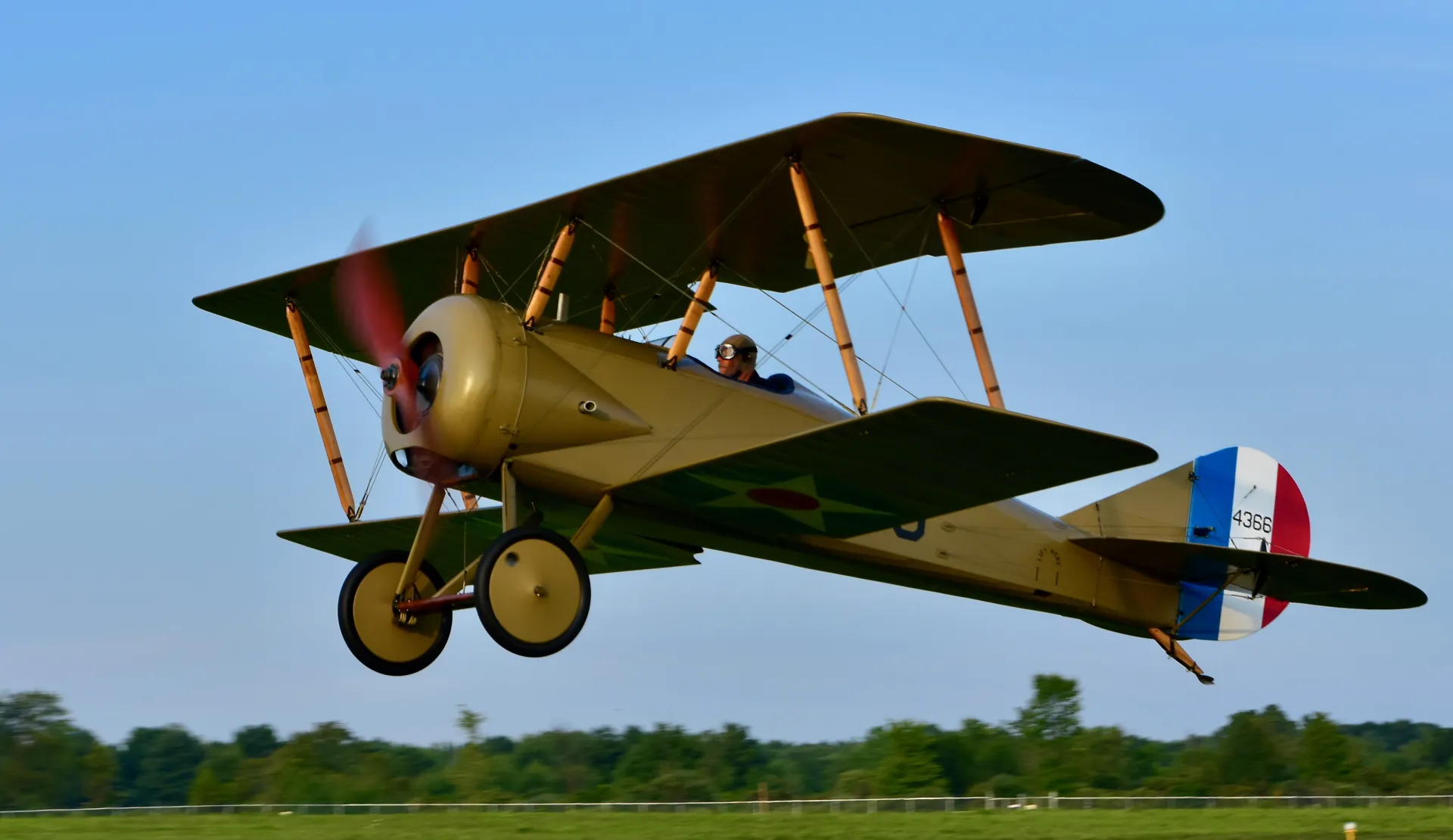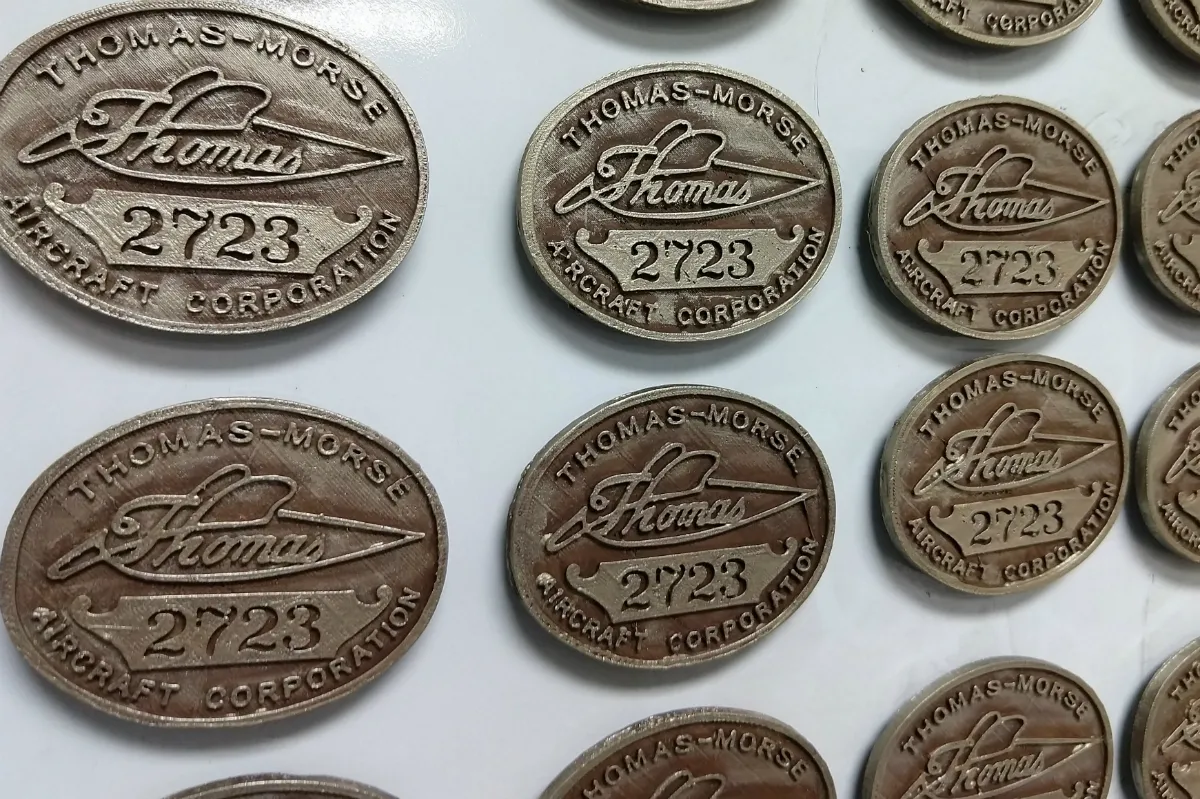One hundred years ago, the Thomas-Morse S-4 Scout was the favorite training airplane of American pilots headed overseas to fight in the First World War. On September 29, a fully restored Scout, affectionately referred to as “Tommy” by pilots, will fly over the skies of Ithaca, where the planes were originally produced. To commemorate the event, Ithaca College physics professor Michael “Bodhi” Rogers and his students created 100 replica “Tommy badges” in the college’s 3D Printing Lab.
During the war, the Thomas-Morse Aircraft Corporation used the original employee identification badges as a security measure around its advanced training plane. The replica badges will be given as souvenirs to volunteers who helped restore the Scout and organize the flight event.
Rogers said working on the project was interesting not only because of the hurdles he and the students overcame, but because of its connection to a little-known part of Ithaca’s history. “To be able to participate in that is really exciting,” he said. “It’s going to be fun to see people react to the badges.”
Rogers worked with students Kurt Burdick ’19 and Alexis Farrington ’20 on the project, which presented them with several challenges before they could move on to mass production.
In order to create a digital model of the original badge to upload to the printer, they first tried using a state-of-the-art 3D laser scanner that can record details as fine as a tenth of a millimeter. Rogers has previously used the scanner at archaeological sites, but it had trouble making a 3D model of the badge due to how thin it is and because of its reflective metal surface. Instead, they took a photo of the badge and used computer software — Adobe Illustrator and Google SketchUp — to trace a 2D image of the badge and convert it into a 3D model.

